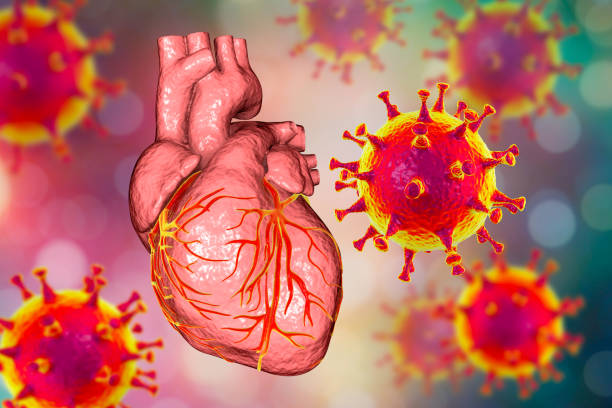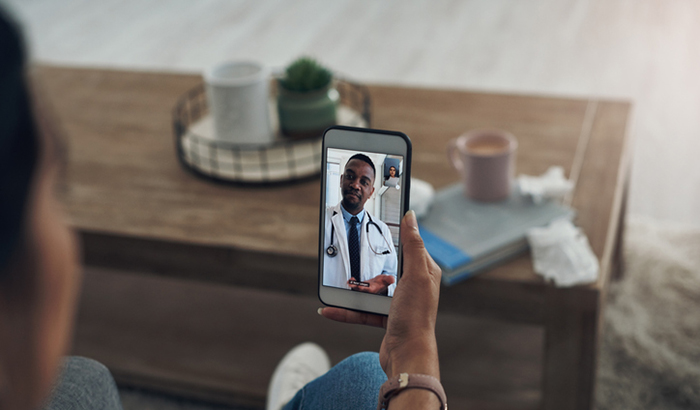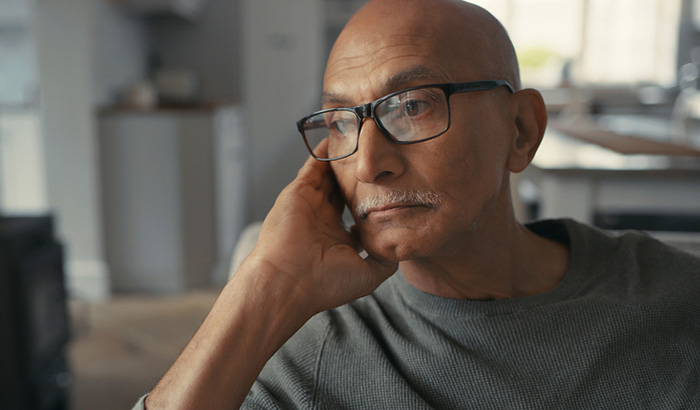COVID-19 upended daily life and created significant implications for the health and well-being of people around the world. As the virus continues to spread—so far, it has infected more than 91 million people in the U.S., according to the Centers for Disease Control and Prevention—HSR&D has continued to support research that explores the many facets of COVID-19 and other infectious diseases, from prevention to identification and management of long-term physical and mental symptoms.
HSR&D’s Evidence Synthesis Program (ESP), for example, works to synthesize evidence to identify best practices, and has developed a catalog of COVID-19 evidence reviews from around the world. Additionally, three of HSR&D’s Quality Enhancement Research Initiative (QUERI) Rapid Response Teams have partnered with the National Center for Health Promotion and Disease Prevention to carry out quality improvement projects related to vaccine hesitancy.
The following are some recent VA studies on COVID-19 and its repercussions:

©iStock/PeopleImages
The aftereffects of COVID-19 can involve pulmonary and several other organs, including the cardiovascular system. Although cardiovascular complications during the acute phase of COVID-19 have been well described, the post-acute cardiovascular manifestations of COVID-19 have not been comprehensively assessed. Studies of post-acute COVID-19 conditions across the spectrum of care settings of acute infection (non-hospitalized, hospitalized, and admitted to intensive care) are also lacking. Addressing this knowledge gap will inform post-acute COVID-19 care strategies.
About this study
This study examined associations between COVID-19 and incident cardiovascular disease in the post-acute phase of COVID-19. Investigators estimated the risks and 12-month burdens of cardiovascular outcomes among 153,760 Veterans who survived the first 30 days of COVID, compared to 5,637,647 VA healthcare users with no COVID and 5,859,411 Veterans who used VA healthcare prior to the COVID pandemic. Investigators assessed patient demographics and health characteristics (e.g., obesity, smoking, hypertension). Cardiovascular conditions examined included: cerebrovascular disorders, dysrhythmia, inflammatory heart disease, and other cardiac disorders and thrombotic disorders.
Findings
Implications
 Principal investigator
Principal investigator
Ziyad Al-Aly, MD, is the chief of research and development at the VA St. Louis Health Care System in St. Louis, MO.
Publications
Al-Aly Z, Bowe B, Xie Y. Long COVID after breakthrough SARS-CoV-2 infection. Nature Medicine. July 2022;28(7):1461–1467.
Xie Y, Al-Aly Z. Risks and burdens of incident diabetes in long COVID: a cohort study. The Lancet Diabetes & Endocrinology. May 1, 2022;10(5):311–321.
Xie Y, Xu E, Bowe B, and Al-Aly Z. Long-term cardiovascular outcomes of COVID-19. Nature Medicine. March 2022;28(3):583–590.

©iStock/Chee Siong Teh
The movement to integrate telehealth into clinical practice has been growing for several years, but there have been significant barriers to its widespread adoption. The COVID-19 pandemic forced rapid expansion of telehealth services. Exploring the adoption of telehealth within a single VA medical center provided the opportunity to understand the varied barriers and facilitators at different clinics and care providers, each with distinct needs and priorities.
About this study
Even though VA was an early adopter of telehealth, the vast majority of VA outpatient care continued to be face-to-face through February 2020. Because VA telehealth programs vary by clinic, this study examined how telehealth services were used at three types of outpatient clinics—primary care (PC), cardiology, and home-based primary care (HBPC)—within the VA Greater Los Angeles Healthcare System (GLA). To illustrate the use of telemedicine at each of the three clinics, researchers used VA data to:
Findings
Implications
 Principal investigator
Principal investigator
Claudia Der-Martirosian, PhD, is a core investigator at HSR&D’s Center for the Study of Healthcare Innovation, Implementation & Policy (CSHIIP), VA Greater Los Angeles Healthcare System.
Publications
Der-Martirosian C, Chu K, Steers W, et al. Examining telehealth use among primary care patients, providers, and clinics during the COVID-19 pandemic. BMC Primary Care. June 18, 2022;23(155).
Balut M, Wyte-Lake T, Steers W, and Der-Martirosian C. Expansion of telemedicine during COVID-19 at a VA specialty clinic. Healthcare. March 1, 2022;10(1):100599.
Der-Martirosian C, Wyte-Lake T, Balut M, et al. Implementation of telehealth services at the U.S. Department of Veterans Affairs during the COVID-19 pandemic. JMIR Formative Research. September 23, 2021;5(9):e29429.

©iStock/Chee Siong Teh
The COVID-19 pandemic significantly decreased Veterans’ access to healthcare and left some of the most high-risk Veterans—those with opioid use disorder (OUD)—vulnerable to worse health outcomes. Individuals with an OUD are at a significantly high risk of overdose, unintentional death, and a wide range of negative health related consequences. Evidence-based medications for OUD exist, but providers must undergo training to be certified to prescribe these types of medications, which has resulted in inadequate numbers of providers, particularly in rural areas.
Telehealth is a potentially effective service delivery method to mitigate this access to care problem, but the Ryan Haight Act of 2008 mandates that the first visit with a prescriber of schedule II–IV controlled substances be done in person. However, due to the COVID pandemic, the Act was temporarily waived. This created potential for treatment retention for high-risk Veterans with OUD and presented an opportunity to understand the impact of VA's preexisting telehealth structure for the treatment of OUD as well as the costs and benefits of the Ryan Haight Act.
About this study
The primary objectives of this study were to assess the impact of COVID-19 and related changes in policy and service design on access to care and medication management for Veterans with OUD, and to examine temporal trends during the COVID-19 window (for this study, from 3/16/20 to 6/30/20) in schedule II–IV narcotic prescription rates for Veterans who would normally fall under the parameters of the Ryan Haight Act. Researchers aimed to:
Preliminary findings
Implications
Principal investigator
 Ursula Myers, PhD, MS, is an investigator at HSR&D’s Health Equity and Rural Outreach Innovation Center (HEROIC) in Charleston, SC.
Ursula Myers, PhD, MS, is an investigator at HSR&D’s Health Equity and Rural Outreach Innovation Center (HEROIC) in Charleston, SC.
Publications
Myers U, Birks A, Grubaugh A, and Axon R. Flattening the curve by getting ahead of it: How the VA Healthcare System is leveraging telehealth to provide continued access to care for rural Veterans. The Journal of Rural Health. January 1, 2021;37(1):194–186.

©iStock/Marco VDM
Although the COVID-19 pandemic has created sweeping changes in people’s lives, due to the newness of this lethal virus, limited research has been conducted on its effect on mental health. Mandatory quarantines, for example, can have immediate and long-term effects on social engagement and isolation, potentially disrupting and eroding support, dependence, and trust in social networks, which in turn can harm overall well-being. Prior to the COVID-19 pandemic, Veteran suicide rates were already alarming, with 17 Veterans dying per day. Although social distancing is importantly designed to flatten the trajectory of COVID-19, it can have unintentional negative outcomes on Veterans' social networks, overall well-being, and suicide risk.
About this study
This study assessed Veterans’ experiences during the COVID-19 pandemic, changes in their social networks due to social distancing, and modifiable treatment factors to inform intervention development. Using VA data, researchers identified Veterans with a COVID-19 diagnosis and PTSD, mood disorder, or other psychiatric disorder, as psychiatric disorders raise suicide risk. Study participants (n=233) completed a one-time, 90-minute survey via their mobile device, tablet, or computer. Investigators measured hostile attributional bias, a form of social cognition that feeds a tendency to view others’ behavior as hostile or aggressive even when the behavior is benign or ambiguous. A personal-level social network analysis was conducted, and a composite adverse social connectedness measure was created based on a combination of social network measures, perceptions of social support relationships, and perceived overall level of social support.
Findings
Implications
Principal investigator
 Bryann R. DeBeer, PhD, is an investigator with HSR&D’s Seattle-Denver Center of Innovation for Veteran-Centered and Value-Driven Care and is director of the VA Patient Safety Center of Inquiry—Suicide Prevention Collaboration at the Rocky Mountain MIRECC for VA Suicide Prevention.
Bryann R. DeBeer, PhD, is an investigator with HSR&D’s Seattle-Denver Center of Innovation for Veteran-Centered and Value-Driven Care and is director of the VA Patient Safety Center of Inquiry—Suicide Prevention Collaboration at the Rocky Mountain MIRECC for VA Suicide Prevention.
Dr. DeBeer discussed this study on a recent HSR&D podcast.